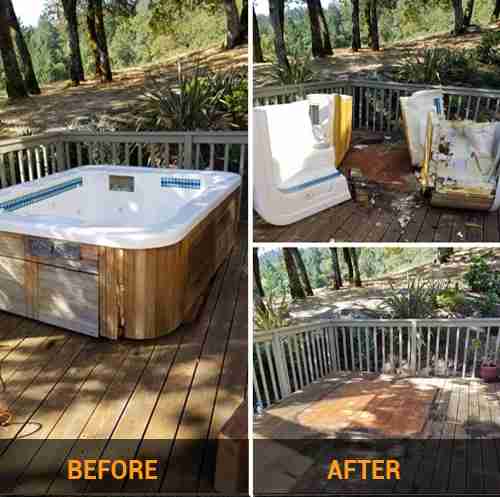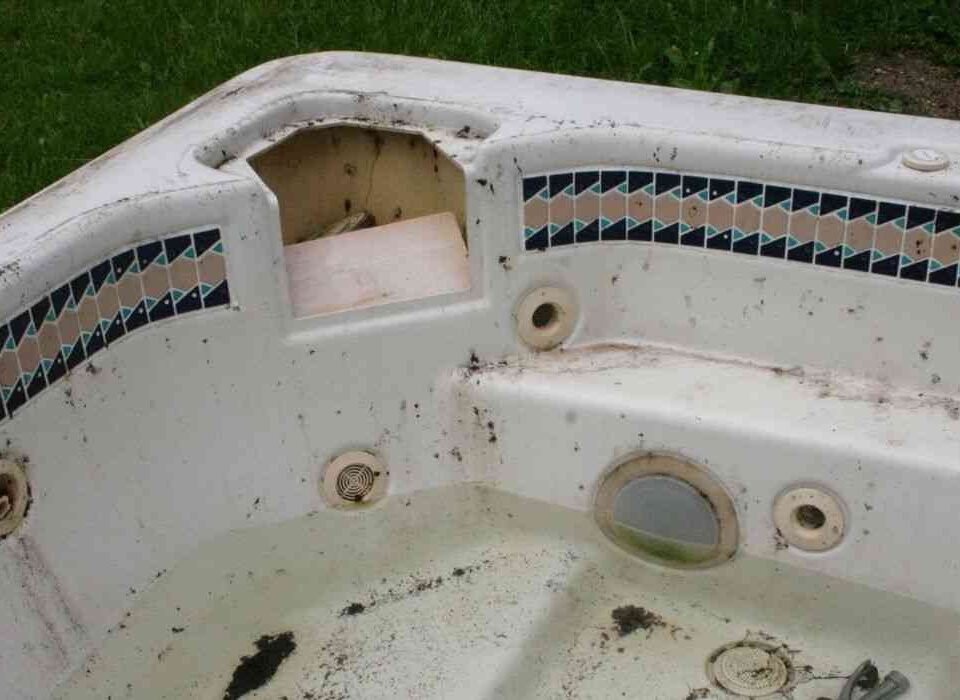
Why Residential Junk Removal Is Essential for a Clutter-Free Home
August 1, 2025
How to Easily Dispose of Old Appliances in Your Home
August 1, 2025Hot Tub Removal Made Easy: Tips and Tricks
Removing a hot tub starts long before any tools are picked up. The area surrounding it needs to be cleared of furniture, planters, or anything that could get in the way. This not only makes the process smoother but also reduces the chance of accidental damage to your property. A clear pathway to the exit point will allow the removal crew or yourself to work efficiently without unnecessary stops. Think of it as setting the stage for a hassle-free process.
It is also smart to identify the safest route for carrying parts once the dismantling begins. Whether you are working alone or with help, knowing how you will navigate corners, steps, or narrow gates will save time and frustration. Laying down protective coverings on decks or pathways can shield them from scratches or debris. This bit of preparation transforms what could be a chaotic day into a well-orchestrated project where every movement has purpose.
Safely Disconnecting Water and Power Sources
Before any physical removal takes place, attention should turn to the utilities that keep the hot tub running. Water lines should be shut off and the tub drained completely. Standing water can make the structure heavier and harder to move, not to mention the risk of spilling it through your property. Ensuring a thorough drain will make the next stages much easier to handle.
Electrical connections also demand careful handling. If the hot tub is hardwired, power should be cut at the breaker box to eliminate the risk of shocks. For models plugged into an outlet, the plug should be removed and inspected for wear. This is a step where caution pays off. A slow, deliberate approach to disconnecting both water and power ensures that the removal process begins with safety as the top priority.

Dismantling for Easier Transport
Hot tubs can be bulky and awkward to move in one piece, so breaking them down into smaller sections often makes the job manageable. Panels, covers, and control units can usually be removed with standard tools, instantly reducing the overall weight. Once disassembled, each piece becomes less cumbersome, and the load can be spread out among multiple people or trips.
Taking apart a hot tub is also an opportunity to identify parts that can be recycled or repurposed. The shell, pumps, and metal components each have different disposal or reuse options. Working in stages ensures you avoid damaging reusable pieces. Breaking the project into smaller steps also keeps fatigue at bay and allows for a steady pace rather than a rushed, overwhelming push.
Protecting Your Property During Removal
Moving a hot tub involves navigating tight spaces and potentially brushing past walls, fences, or landscaping. Without precautions, damage is easy to inflict. Using moving blankets or padded coverings on vulnerable surfaces can safeguard your property. If the removal involves crossing a lawn, placing plywood sheets down will prevent ruts or soil compaction.
Even small protective measures can have a big impact. Covering door frames, wrapping railing posts, and guarding sharp edges from scratches can help avoid costly repairs. When combined with clear communication among everyone involved, these steps turn the process into one that protects your home as much as possible while keeping the removal efficient and smooth.
Lifting and Carrying Without Injury
Hot tubs are deceptively heavy, and improper lifting techniques can quickly lead to injuries. Bending at the knees, keeping the back straight, and relying on leg strength instead of the lower back are simple yet crucial rules to follow. Using lifting straps or dollies can help distribute the weight evenly and reduce strain.
Team coordination plays an important role here. Clear instructions about who is lifting and when to move help keep everyone on the same page. Taking breaks when needed ensures no one overexerts themselves. When handled with care and awareness, even the heaviest sections of a hot tub can be moved without injury or unnecessary stress on the body.
Disposing of Old Hot Tub Materials Responsibly
Once the hot tub is out of your space, the next question is what to do with it. Not every part belongs in a landfill. Many areas offer recycling programs for components such as metal frames, pumps, and even some types of plastic shells. These options help reduce environmental impact and keep reusable materials in circulation.
If parts of the hot tub are still in working order, donating them can give them a second life. Some organizations or individuals may find value in refurbished equipment. Taking time to sort materials into recycling, donation, and waste categories prevents unnecessary waste and makes the removal process more environmentally friendly.
Timing Your Removal for the Best Results
Choosing the right time to remove a hot tub can make a noticeable difference. Weather plays a key role, as working in extreme heat or heavy rain can create hazards and slow progress. A dry, mild day provides better traction and comfort for those doing the heavy lifting.
Timing can also affect access to disposal facilities. Planning your removal on a day when recycling centers or dump sites are open avoids delays. A well-timed project ensures fewer obstacles, smoother transitions between each stage, and ultimately a more successful and less stressful removal experience.
Repurposing the Space After Removal
Once the hot tub is gone, the area it occupied presents an opportunity for something new. Some people choose to replace it with a garden bed, outdoor seating area, or even a fire pit. Planning how to use the space ahead of time can add motivation during the removal process.
It can also be a chance to upgrade your outdoor living area. Whether the freed space becomes a small retreat, a play area, or an extension of your patio, envisioning the end result adds excitement. Transforming the area into something functional and beautiful helps you appreciate the effort that went into the removal.
Tools That Make the Job Easier
Having the right equipment can save time and effort. Moving straps, pry bars, wrenches, and power drills often come in handy during dismantling. Dollies or furniture sliders can make moving large pieces smoother and less physically demanding.
Preparation goes beyond simply owning the tools—it also means knowing how to use them effectively. Testing equipment beforehand ensures nothing breaks mid-task. When every tool serves a clear purpose, the removal becomes more streamlined and less physically taxing, allowing you to focus on completing the job safely and efficiently.
Avoiding Common Mistakes During Removal
Rushing through a hot tub removal can lead to overlooked steps or preventable accidents. Forgetting to disconnect all power sources, underestimating the weight, or skipping protective measures for your property are frequent missteps. These errors can cause unnecessary damage, delays, or safety hazards.
A deliberate pace, careful planning, and clear communication can prevent these problems. Reviewing each stage before starting helps ensure nothing is missed. Avoiding common mistakes not only protects your property and health but also makes the entire process smoother from start to finish.
Conclusion
Hot tub removal may seem like an overwhelming task, yet with planning, patience, and attention to detail, it becomes far more manageable. From preparing your space to responsibly disposing of parts, each step plays a role in ensuring the process is efficient and safe. The reward is not just the removal itself but the possibilities that open once the space is free for new uses.
For expert help with this process, reach out to North Bay Junk Removal in Santa Rosa, CA. They can be contacted at 707 478 6817 or by email at northbayjunkremoval1@gmail.com. Their team has the experience and equipment to handle the heavy lifting, allowing you to enjoy a stress-free transformation of your outdoor space.



